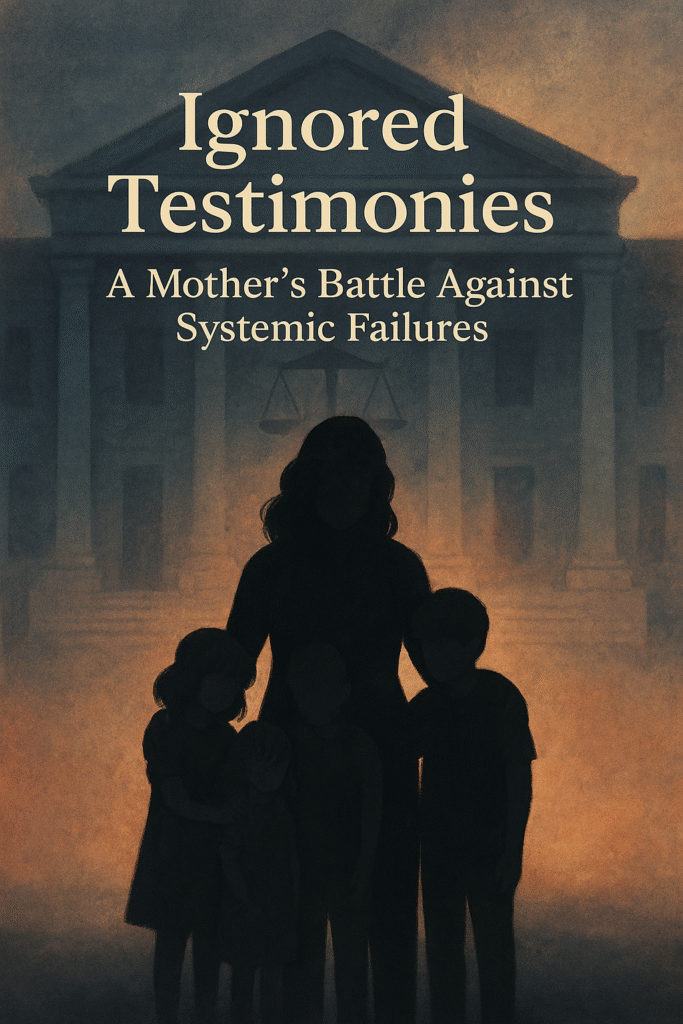Why sharing personal stories creates collective healing

The Loneliness of Silent Suffering
When trauma strikes, one of the deepest wounds is loneliness. We may feel like no one could possibly understand what we’ve endured. Even if others know the facts, they cannot know the weight. The silence isolates us, whispering: You are the only one. No one else could feel this way.
But silence is a liar. The truth is that trauma is far more common than most of us realize, and one of the most powerful antidotes is storytelling. When we risk sharing even a small part of our journey, something shifts—not only in us, but in the person listening.
The Ripple Effect of One Voice
Your story is not just for you. It has the power to ripple outward in ways you may never see.
Imagine a woman who finally finds the courage to write about her years in an emotionally abusive relationship. She posts her words quietly, unsure if anyone will read them. Somewhere across town, another woman stumbles upon her story. Tears rise as she realizes: That’s me. She just described my life.
In that moment, the listener is no longer alone. And neither is the writer. This is the ripple effect of storytelling. One voice becomes two, then ten, then a chorus that refuses to stay silent.
The Courage to Go First
Every community needs someone who will go first. It is never easy. The first voice often shakes. It worries about judgment, misunderstanding, or rejection. But when someone dares to speak, the silence breaks.
Think of Jesus with the Samaritan woman at the well (John 4). She carried her shame silently, avoiding others, until one conversation changed everything. Jesus named her story with compassion, and she ran to her town saying, “Come, see a man who told me everything I ever did.” Her story, once a source of shame, became a testimony that invited others into healing.
When we go first, we create space for others to follow. Our courage opens a door.
Storytelling as Collective Healing
Trauma may happen in isolation, but healing rarely does. Communities can carry each other when individual strength feels weak.
When one person shares their story, it invites others to do the same. Slowly, a web of connection forms: You too? I thought I was the only one. These shared words knit together a fabric of solidarity. Instead of fractured individuals, a community emerges—a group of people who recognize themselves in each other’s pain and in each other’s resilience.
This is why forums, support groups, and storytelling blogs like TOMFAW matter so much. They are not just collections of words; they are lifelines. They remind us that even in suffering, we belong.
Breaking the Chains of Shame
Shame thrives in secrecy. It convinces us that if others knew our story, they would turn away. But storytelling breaks those chains.
When we share our stories and are met with compassion, shame begins to lose its grip. We realize: What happened to me does not make me unlovable. My past does not disqualify me. My wounds do not define my worth.
And when others hear our stories, they too are freed from shame. They see that the very things they thought disqualified them are the very things that connect them to others.
The Role of Faith in Shared Storytelling
God created us as communal beings. From the beginning, He declared that it is not good for us to be alone (Genesis 2:18). The Church itself was designed as a community that bears one another’s burdens (Galatians 6:2).
Throughout Scripture, testimony is central. The Israelites told and retold the story of their deliverance from Egypt so future generations would remember God’s faithfulness. The early church spread not just doctrine, but stories—eyewitness accounts of what Jesus had done.
Even today, when we share our testimonies of pain and redemption, we join this ancient tradition. Our stories are not just personal; they are communal acts of faith that proclaim: God is still at work. Healing is still possible.
Practical Ways to Share Safely
Sharing your story is powerful, but it must also be safe. Here are some gentle guidelines:
- Begin small. Share with a trusted friend, counselor, or support group before posting publicly.
- Decide your boundaries. You do not owe anyone your full story. Choose what details to share and what to keep private.
- Write in third person if needed. This can provide distance and protection while still telling the truth.
- Remember timing matters. If a wound is still fresh, wait until you feel grounded before sharing more widely.
- Honor others in your story. Speak truthfully but avoid language that could harm or defame. Frame your story around your experience.
Healing stories are most powerful when they are both truthful and responsible.
When We Hear Another’s Story
Community healing is not only about telling—it is also about listening. When someone shares their story with us, the way we respond matters deeply.
We do not need to fix, advise, or analyze. We simply need to listen with compassion, to say, “I believe you. I’m honored you trusted me with this. You are not alone.”
Listening itself becomes an act of healing. As Henri Nouwen wrote, “Listening is paying full attention to others and welcoming them into our very being.”
A Gentle Closing Thought
Every story matters. Every voice has weight. Yours included.
When you share your story, you are not only reclaiming your own healing—you are also offering a gift to others. You are building a community where shame has no power, where loneliness gives way to solidarity, where silence is replaced with truth.
In a world full of noise, your honest words may be the exact balm someone else has been praying for. Do not underestimate the ripple effect of your courage.
Because sometimes the simple act of telling your story is not just about you—it is about the many who will find hope because you dared to speak.





